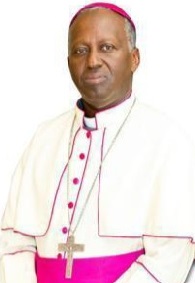The Diocese of Butare, located in the southern part of Rwanda, has a rich history marked by significant contributions to the Catholic Church and the broader community. Established on September 11, 1961, the diocese has evolved through various phases of leadership and development, playing a pivotal role in the evangelization and spiritual growth of the region.
Establishment and Early Leadership
The Diocese of Butare, originally named the Diocese of Astrida, was detached from the Diocese of Kabgayi. This significant event marked the beginning of a new chapter in the Catholic Church’s mission in Rwanda. The first bishop, Jean Baptiste Gahamanyi, was ordained on January 6, 1962. His leadership was instrumental in laying the foundation for the diocese’s growth. Bishop Gahamanyi served until his resignation in January 1997 and passed away on June 19, 1999.
Renaming and Geographical Significance
On November 12, 1963, the diocese was renamed Butare by Pope Paul VI. Geographically, the Diocese of Butare is strategically located, sharing its borders with the Diocese of Kabgayi to the north, the Archdiocese of Kigali to the northeast, the Republic of Burundi to the south and east, and the Diocese of Gikongoro to the west. Covering an area of approximately 1,958 km², the diocese has a population density of 441.9 inhabitants per km².
Contributions to Evangelization and Education
The Diocese of Butare is notable for its significant contributions to the Catholic Church’s mission in Rwanda. The first Catholic parish in Rwanda, Save, is located within the diocese, marking the beginning of the country’s evangelization. The diocese also hosts the Grand Interdiocesan Seminary of Nyakibanda, established in 1936, which has trained numerous priests from Rwanda, Burundi, and the eastern Democratic Republic of the Congo. Additionally, the propaedeutic seminary at Nyumba, established in 2006, plays a crucial role in guiding young men in discerning their priestly vocations.
The diocese is also home to a significant number of educational institutions. There are 121 guardian schools, 218 primary schools, and 86 secondary schools under the responsibility of the Catholic Church. These schools play a crucial role in providing quality education and fostering moral and social values among the youth.
In addition to these schools, the diocese hosts the Catholic University of Rwanda, which opened its doors on July 12, 2010. The university offers a range of programs and degrees across six faculties, providing higher education opportunities to students from Rwanda and beyond. The Catholic University of Rwanda is committed to academic excellence, innovation, and community engagement, preparing students to meet the challenges of the modern world.
Leadership Transitions and Development
The leadership of the Diocese of Butare has seen significant transitions that have shaped its development. After Bishop Gahamanyi’s resignation, His Lordship Monsignor Philippe Rukamba was appointed bishop on January 18, 1997. His episcopal ordination took place on April 12 of the same year, and his motto was “Considerate Iesum.” Bishop Rukamba’s tenure saw substantial growth and development within the diocese, which continued until 2024.
In 2024, Bishop Jean Bosco Ntagungira was appointed by Pope Francis, bringing new vision and leadership to the diocese. Bishop Ntagungira’s appointment marks a new era for the Diocese of Butare, continuing the work of his predecessors and furthering the mission of the Catholic Church in the region.
Structural and Administrative Organization
The Diocese of Butare is divided into five deaneries: Butare, Kansi, Mugomba, Nyanza, and Save, each comprising several parishes and ecclesiastical communities. As of 2020, the diocese has a population of 984,425, with 59.49% being Catholics. The diocese currently comprises 26 parishes, including a university parish, and is subdivided into 98 centers and 2,857 ecclesiastical communities.
Deaneries and Parishes:
- Butare Deanery: Butare, Karama, Ngoma, Rango, Saint Dominique (University).
- Kansi Deanery: Kansi, Cyahinda, Higiro, Nyumba, Gikore.
- Mugomba Deanery: Mugomba, Gisagara, Kibilizi, Kirarambogo, Magi.
- Nyanza Deanery: Nyanza, Busoro, Kiruhura, Nyamiyaga, Ruyenzi.
- Save Deanery: Save, Byiza, Gakoma, Mbazi, Rugango, Simbi.
Administrative Districts:
- Gisagara District: Includes 11 parishes such as Sacré-Cœur de Save (1900) and Notre Dame des Apôtres de Kansi (1910).
- Huye District: Includes 11 parishes such as N-D de la Sagesse de Butare (1928) and Saint André de Nyumba (1945).
Future Outlook
Under the leadership of Bishop Jean Bosco Ntagungira, the Diocese of Butare is poised to continue its mission of evangelization, education, and community development. The diocese remains a vital part of the Catholic Church in Rwanda, contributing to the spiritual and social well-being of its members. The future looks promising as the diocese builds on its rich history and continues to serve its community with dedication and faith.
Conclusion
The Diocese of Butare stands as a testament to the enduring legacy of the Catholic Church in Rwanda. From its establishment in 1961 to the present day, the diocese has played a crucial role in the spiritual and social development of the region. With a strong foundation laid by its early leaders and continued growth under new leadership, the Diocese of Butare is well-positioned to face the future with hope and determination.


